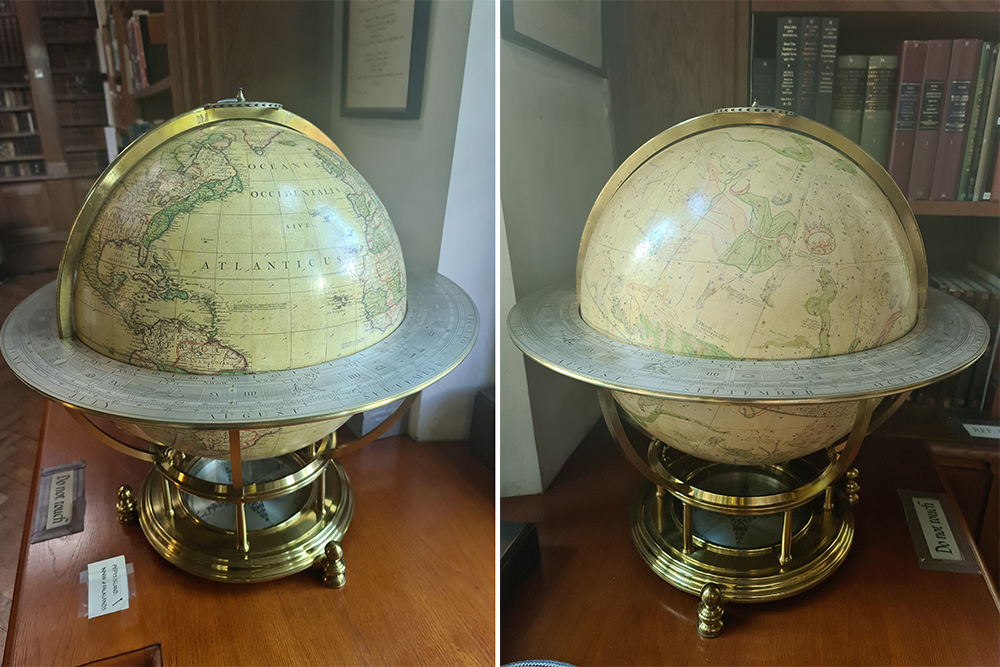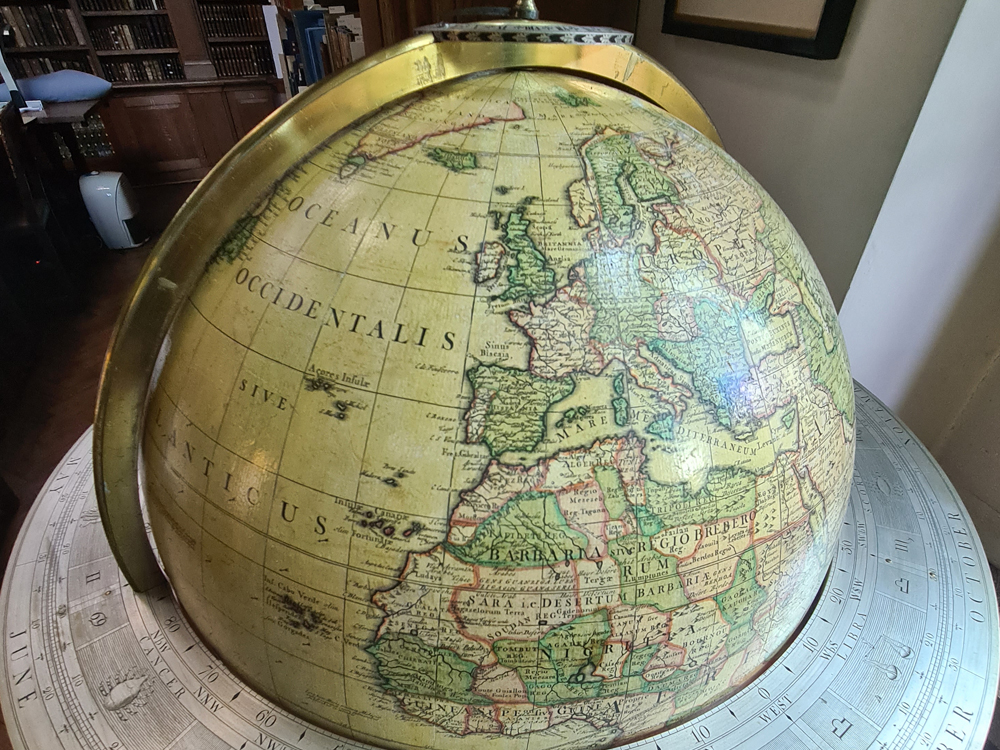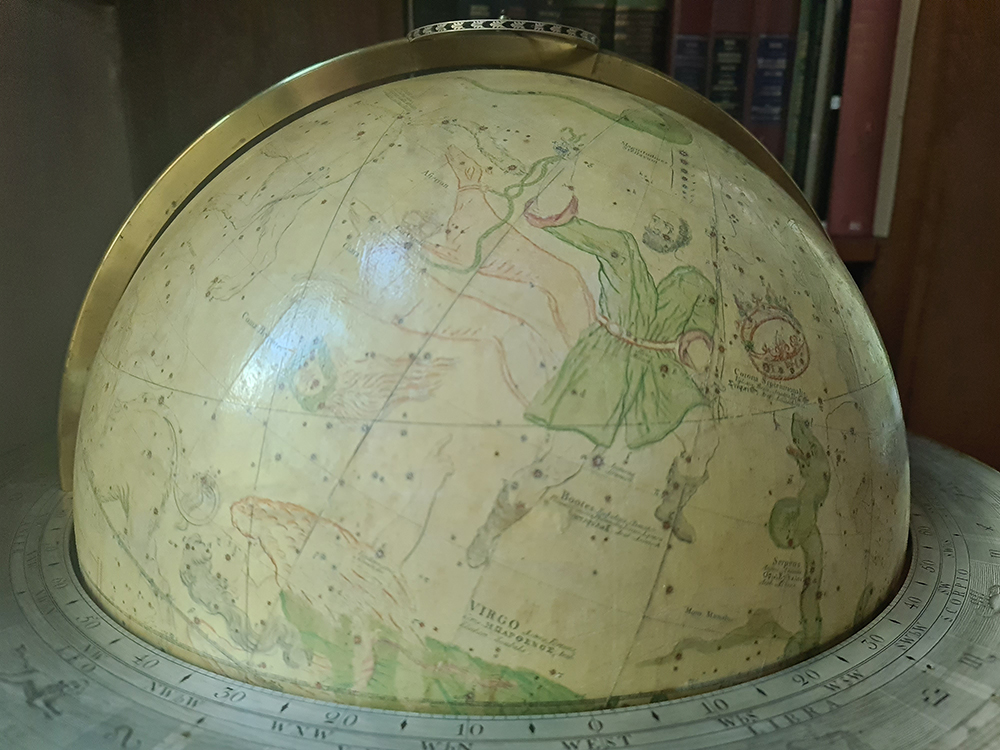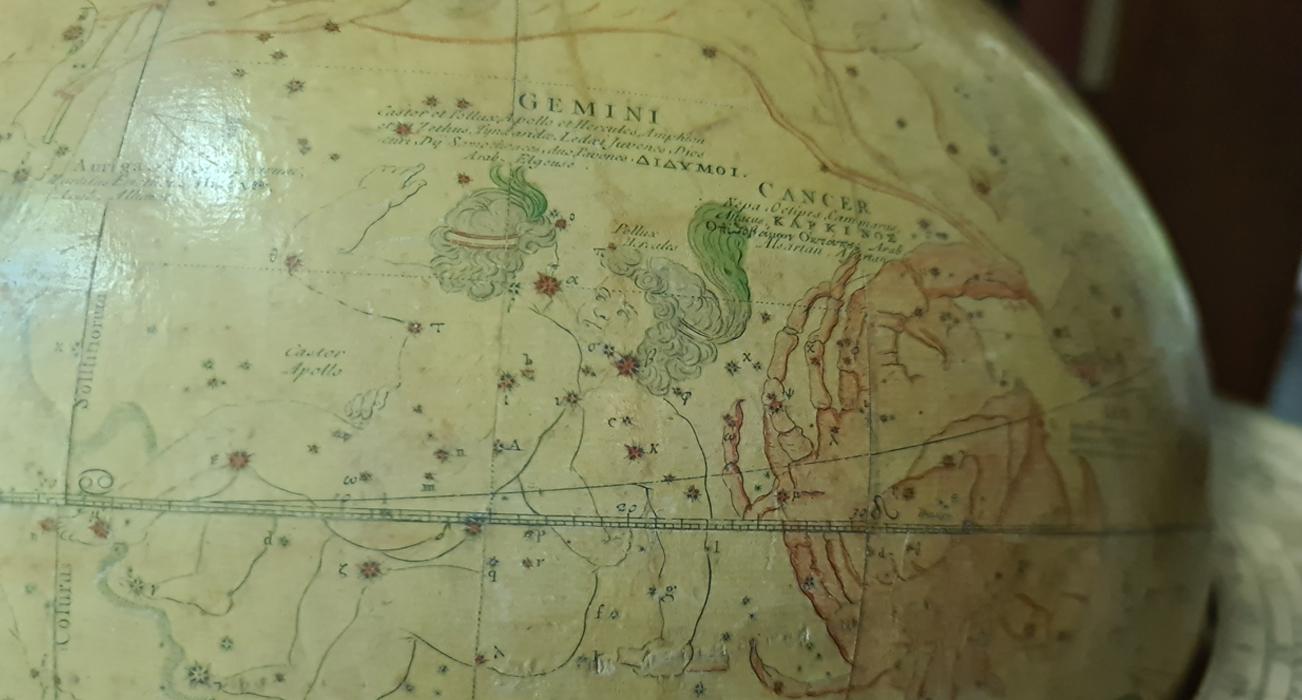Senex Globe Restoration
His most important printed publications include The English Atlas (1714), A New General Atlas (1721) and Atlas Maritimus &Commercialis (1728), and yet it is for the creation of his intricate antique globes that Senex is perhaps best well-known today.
Magdalene is the proud owner of a pair of 16-inch globes. Housed in the Old Library they are believed to have been created by Senex between 1728 and 1740. Each globe, one terrestrial and the other celestial, is mounted on a brass stand with an engraved silvered compass at its base. The name of the prominent English instrument maker, Jonathan Sisson (1690-1747), appears on the compass face, in what is the only known example of a collaboration of this kind between Senex and Sisson.

Both globes are made from plaster and covered in segments of printed paper known as ‘gores’. The terrestrial globe is covered with eighteen full gores compared to the twenty-four gores that cover its celestial counterpart. The gores were first engraved and printed in black ink before they were applied to the curved surface of the sphere. They were then painted in watercolour and coated in varnish. In addition to the globes, the Old Library also holds a pair of contemporary eighteenth-century wooden travelling boxes, designed for transporting the globes.

The globes recently underwent extensive restoration and conservation by Sylvia Sumira, a globe conservator and Francis Brodie, a horology conservator. The globes were dusted, cleaned, and surface cavities were filled and smoothed over. The filler was then toned using watercolours to match the existing colours. Where the protective varnish was thin, gelatine was used to build up and restore the thinning areas. The metal parts of the globes were cleaned removing dust and dirt and the Meridian Rings were re-silvered. Small areas of corrosion, for example on the compass needle on the celestial globe, were coated with microcrystalline wax to keep any future corrosion at bay.

The globes were donated to the College in 1972 by Sir Stephen Middleton (1927), in memory of Dr Richard Ladborough.
